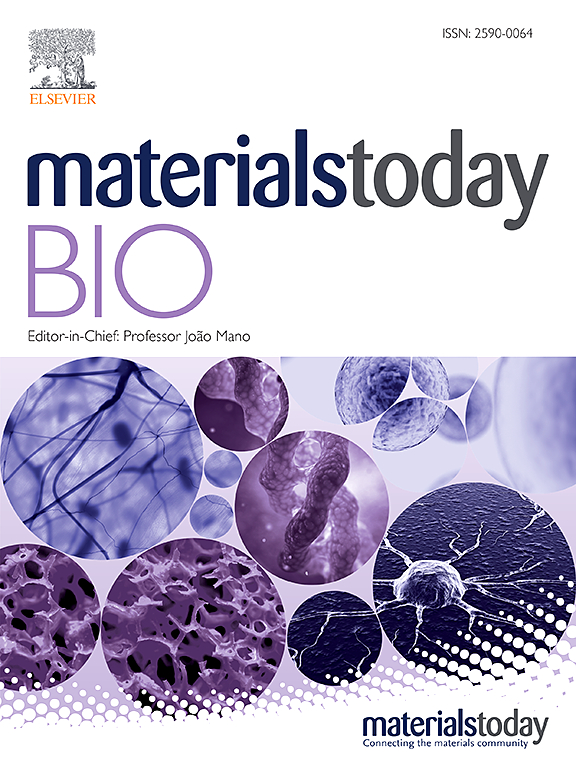用于骨再生的可编程生物材料
IF 8.7
1区 医学
Q1 ENGINEERING, BIOMEDICAL
引用次数: 0
摘要
可编程生物材料的特点是能够以周期性、可逆或连续的方式按需调整特性和功能。这与传统生物材料形成鲜明对比,后者会发生不可逆、不可控的变化。这篇综述综述了可编程生物材料的主要进展,研究了它们的设计原理、功能和在骨再生中的应用。它描绘了从传统生物材料到可编程生物材料的转变过程,强调了可编程生物材料所具有的更高精度、安全性和可控性,这对于临床和生物安全至关重要。然后,我们将可编程生物材料分为六类:基于核酸的动态生物材料、电响应生物材料、具有可编程特性的生物活性支架、用于靶向骨再生的纳米材料、用于连续再生的表面工程植入物以及刺激响应释放材料。每一类材料都分析了其结构特性及其对骨组织工程的影响。最后,综述进一步总结了可编程生物材料所面临的挑战,并建议结合人工智能和精准医疗来提高其在骨再生和其他生物医学领域的应用。本文章由计算机程序翻译,如有差异,请以英文原文为准。

Programmable biomaterials for bone regeneration
Programmable biomaterials are distinguished by their ability to adjust properties and functions on demand, in a periodic, reversible, or sequential manner. This contrasts with traditional biomaterials, which undergo irreversible, uncontrolled changes. This review synthesizes key advances in programmable biomaterials, examining their design principles, functionalities and applications in bone regeneration. It charts the transition from traditional to programmable biomaterials, emphasizing their enhanced precision, safety and control, which are critical from clinical and biosafety standpoints. We then classify programmable biomaterials into six types: dynamic nucleic acid-based biomaterials, electrically responsive biomaterials, bioactive scaffolds with programmable properties, nanomaterials for targeted bone regeneration, surface-engineered implants for sequential regeneration and stimuli-responsive release materials. Each category is analyzed for its structural properties and its impact on bone tissue engineering. Finally, the review further concludes by highlighting the challenges faced by programmable biomaterials and suggests integrating artificial intelligence and precision medicine to enhance their application in bone regeneration and other biomedical fields.
求助全文
通过发布文献求助,成功后即可免费获取论文全文。
去求助
来源期刊

Materials Today Bio
Multiple-
CiteScore
8.30
自引率
4.90%
发文量
303
审稿时长
30 days
期刊介绍:
Materials Today Bio is a multidisciplinary journal that specializes in the intersection between biology and materials science, chemistry, physics, engineering, and medicine. It covers various aspects such as the design and assembly of new structures, their interaction with biological systems, functionalization, bioimaging, therapies, and diagnostics in healthcare. The journal aims to showcase the most significant advancements and discoveries in this field. As part of the Materials Today family, Materials Today Bio provides rigorous peer review, quick decision-making, and high visibility for authors. It is indexed in Scopus, PubMed Central, Emerging Sources, Citation Index (ESCI), and Directory of Open Access Journals (DOAJ).
 求助内容:
求助内容: 应助结果提醒方式:
应助结果提醒方式:


